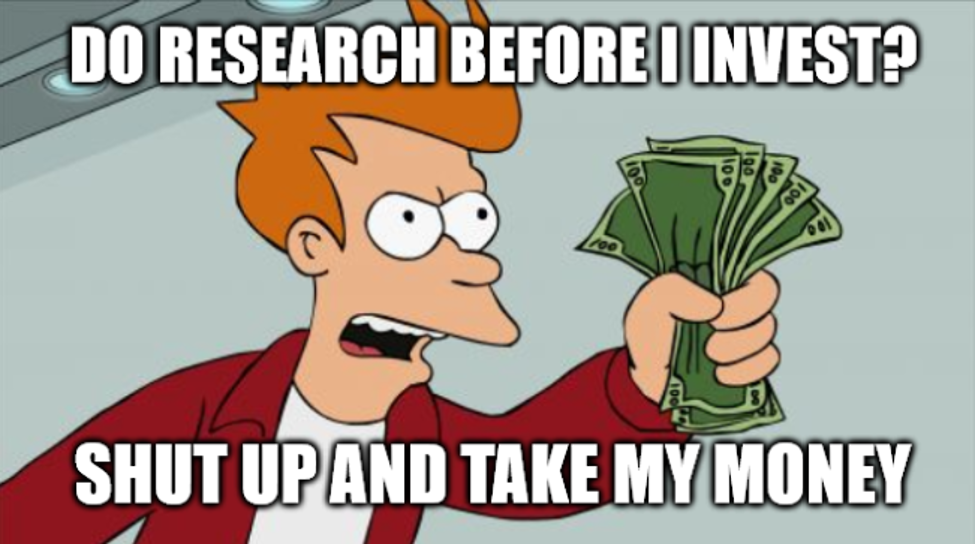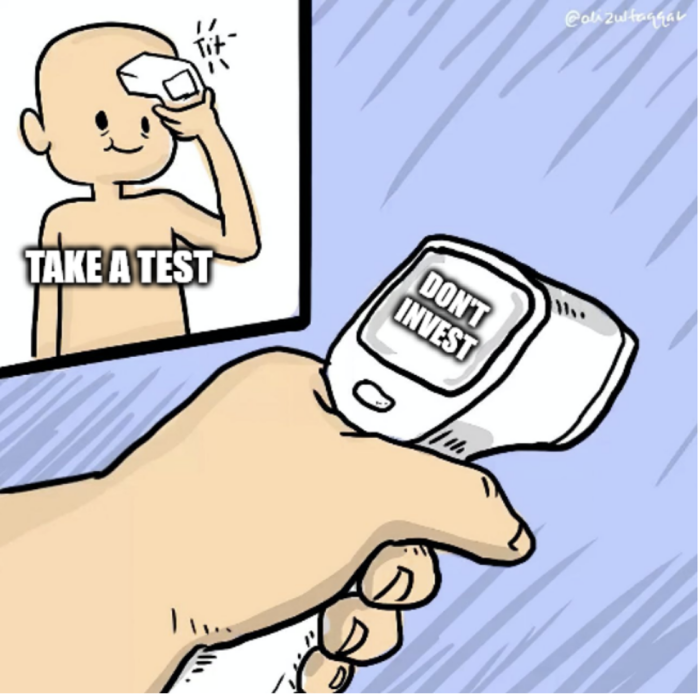
What will bitcoin be worth in the future?
I think bitcoin price predictions are worth the paper they’re printed on. Instead of predictions, I recommend principles: the natural laws of the universe, applied to this new world of blockchain investing. Understanding of these principles can help us build wealth over time.
An example of a principle is “water freezes when it drops below zero degrees Celsius.” These principles are the “way the world is wired,” the hidden laws of the universe, and these principles exist for bitcoin.
Because it’s a new industry, we’ve got to discover these principles, which is what our work is all about. In our weekly newsletter, I lay out these principles for you: first in the form of a hypothesis, which we then test with real-world data and feedback from smart people, then refine and improve.

When we deeply understand these principles, we can make much better predictions as investors: not perfect predictions (because we don’t have perfect knowledge), but good long-term plays. This is much different from most people, who invest in crypto on emotion, hearsay, and tweets.
Instead of predictions, I will summarize some of these principles that we’ve learned, which we can extrapolate to make good long-term investments in 2021 (and beyond).

General Investing Principles for 2021
(Click the headings to read more about each principle.)
Invest in things that add value. Whether you’re investing in the stock market or the block market, find companies and projects that make human life better, faster, or easier. And look for companies that do it well, with good management and great products. Avoid spitcoins and penny stocks.
Invest in education. Get smarter about investing by reading the timeless investing books from our Read and Grow Rich reading list. If you’re out of work, use this time to learn new skills. If you’re less productive, work twice as hard on something that grabs your interest. Every downturn has an upside.
Invest in productivity. I’ve highlighted Ethereum (ETH) as making it easier to develop blockchain applications, and Uniswap (UNI) as making it faster to trade tokens. I’ve invested in both, because they make humans – and our money – more productive. Good investments increase productivity.
Think long-term. Principles are like long-term probabilities: it’s hard to say how things will play out next week, but easier to see how they’ll play out over the next several years. When we make smart long-term investments, then have patience to wait, we can be like investors who bought bitcoin at $100.
Blockchain Investing Principles for 2021
(Deciding whether to buy bitcoin, tokens, or cryptocurrencies.)
The hardest part is getting started. The easiest way to get started is to buy a little bit of bitcoin (even just $100) on Coinbase. The current surge in demand is being fueled by large financial institutions finally realizing that big money is moving into blockchain. Over the long term, that will likely continue.
Think of blockchain investments like stocks. While the two are fundamentally different, we can think of buying tokens of a good project like buying stock in a good company. We can also bring many of the principles of value investing to blockchain investing.
Understand the underlying “business.” For example, we should always know what the hell the blockchain actually does. We should be able to explain it in plain language, and (if possible) use it ourselves. We should know whether it makes money, how it makes money, and where that money goes.
Look for tokens trading at a discount. We can also look for projects that are likely undervalued, or “on sale.” A year ago, you could buy ETH for just over $125; as I write this, the price of ETH is $650. Guess what? Same ETH. (To determine whether a token is cheap relative to its price, see the metrics below.)
Qualitative, Quantitative, Price. There are three tests before we make any blockchain investment: Qualitative (evaluating the underlying business), Quantitative (evaluating the underlying numbers), and Price (deciding whether it’s cheap or expensive, relative to the other two). We call this QQP.
Blockchain should be a slice of the pie. Avoid putting your life savings into bitcoin; instead, favor a sensible investment plan that builds long-term wealth. It’s really hard to get rich quick; it’s much easier to get rich slowly.

Blockchain Investing Metrics for 2021
(How to test for good investments.)
Blockchain is about people. The number of humans using a blockchain is the most important driver of value. For this reason, Total Users is the go-to metric, as it shows actual users of a blockchain (though it doesn’t tell you how many people are actively using it). Think of this like customers of a company.
Unique Active Wallets shows the number of humans actively using a blockchain, so it can be a useful secondary metric. (Note that it’s tricky to calculate, because there are different interpretations of what makes a user “active.”)
For Ethereum-based tokens, Total Gas Used is an excellent metric, because it shows the amount of “fuel” that is being used to power Ethereum (or any given DApp), removing price from the equation. (Note that this metric is currently hard to find – a great development opportunity for someone!)
For investing in the wild and weird world of DeFi, which is the bleeding edge of blockchain, see my articles on “How to Invest in Defi” here and here.
The easy rule of thumb: If the number of real people using a blockchain is shooting up, and they’re getting real value from that blockchain, it’s probably a pretty good long-term investment. (Even better if everyone isn’t rushing to buy it – by that point, it’s probably expensive.)
The simplest way to make blockchain investing decisions, of course, is to just use a template like our Blockchain Believers Portfolio. We’ll be back in a few weeks to show you how it performed in 2020.
Personally, I can’t wait to see how these principles played out.
You might be interested in my Bitcoin Predictions for 2021
John Hargrave is the co-author of Blockchain Success Stories: Case Studies from the Leading Edge of Business.

